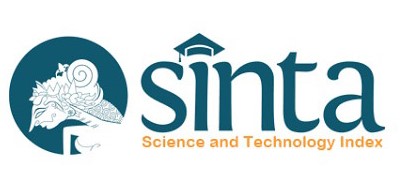Scorpion Envenomation: The Cause of Inadequate Subarachnoid Block - A Case Series
Abstract
Background: Failure of neuraxial or regional anaesthesia can result from factors such as drug errors, technical inefficiencies, and poor patient positioning. While these causes are well-known, resistance to local anaesthetic action due to mutations in sodium channels or scorpion sting is a lesser-known contributor to block failure. In India, a tropical country with a significant number of patients presenting for surgical procedures, a history of scorpion bites is not uncommon.
Case: We observed seven cases of failed regional anesthesia who had history of scorpion sting. All the patients received intrathecal bupivacaine by experienced anesthesiologists, of seven patients five patients did not develop sensory or motor block. One patient had delayed successful subarachnoid block after second attempt and one patient had successful block at first attempt.
Conclusion: Our observations revealed instances of failed spinal blocks, despite adequate drug dosages and experienced anesthesiologists performing the procedures, in patients with a history of scorpion envenomation. Accordingly, our study concludes that obtaining a thorough scorpion sting history during pre-anesthesia check-ups, particularly in endemic areas, can effectively prevent unnecessary repeated pinpricks, escalating dosages, patient and surgeon discomfort, and skepticism towards the skills of anesthesiologists.
Keywords
Full Text:
PDFReferences
Ashagrie HE, Ahmed SA, Melesse DY. The incidence and factors associated with failed spinal anesthesia among parturients underwent cesarean section, 2019: A prospective observational study. International Journal of Surgery Open. 2020; 24:47-51. doi: 10.1016/j.ijso.2020.03.009
Das B, Saviola AJ, Mukherjee AK. Biochemical and Proteomic Characterization, and Pharmacological Insights of Indian Red Scorpion Venom Toxins. Front Pharmacol. 2021;12. doi:10.3389/fphar.2021.710680
Shrestha AB, Shrestha CK, Sharma KR, Neupane B. Failure of subarachnoid block in caesarean section. Nepal Med Coll J. 2009;11(1):50-51.
Bawaskar HS, Bawaskar PH. Indian red scorpion envenoming. The Indian Journal of Pediatrics. 1998;65(3):383-391. doi:10.1007/BF02761131
Bawaskar HS, Bawaskar PH. Scorpion sting: update. J Assoc Physicians India. 2012;60:46-55.
Gokulakrishnan G, Umamageshwaran P. scorpion sting and spinal anaesthesia-a rare case report. Indian J. Appl. Res. 2019;9(11):50-51.doi:10.36106/ijar
de Lera Ruiz M, Kraus RL. Voltage-Gated Sodium Channels: Structure, Function, Pharmacology, and Clinical Indications. J Med Chem. 2015;58(18):7093-7118. doi:10.1021/jm501981g
Cestèle S. Molecular mechanisms of neurotoxin action on voltage-gated sodium channels. Biochimie. 2000;82(9-10):883-892. doi:10.1016/S0300-9084(00)01174-3
Wang X, Zhang S, Zhu Y, et al. Scorpion Toxins from Buthus martensii Karsch (BmK) as Potential Therapeutic Agents for Neurological Disorders: State of the Art and Beyond. In: Medical Toxicology. IntechOpen; 2021. doi:10.5772/intechopen.90889
Campos F v., Chanda B, Beirão PSL, Bezanilla F. β-Scorpion Toxin Modifies Gating Transitions in All Four Voltage Sensors of the Sodium Channel. Journal of General Physiology. 2007;130(3):257-268. doi:10.1085/jgp.200609719
Panditrao MM. Development of Resistance to the Effect of Local Anesthetic Agents Administered Via Various Routes Due to Single or Multiple, Previous Scorpion Bites: A Proposed Hypothesis and Reporting a Yet Unrecognized Phenomenon. J Anesth Crit Care. 2015;3(5). doi:10.15406/jaccoa.2015.03.00110
Kosam D, Nigam R. Effect of Previous Scorpion Sting on the Efficacy of Spinal Anesthesia-A Case Control Study.; 2015. www.ijmrr.in
Panditrao MM, Panditrao MM, Sunilkumar V, Panditrao AM. Effect of previous scorpion bite(s) on the action of intrathecal bupivacaine: A case control study. Indian J Anaesth. 2013;57(3):236-240. doi:10.4103/0019-5049.115593
Clendenen N, Cannon AD, Porter S, Robards CB, Parker AS, Clendenen SR. Whole-exome sequencing of a family with local anesthetic resistance. Minerva Anestesiol. 2016;82(10):1089-1097.
Marti F, Lindner G, Ravioli S. Resistance to local anaesthetics: a literature review. Br J Anaesth. 2022;129(2): e43-e45. doi: 10.1016/j.bja.2022.05.006
Trescot AM. Response to “Does scorpion bite lead to resistance to the effect of local anaesthetics?”. Indian J Anaesth. 2013;57(2):217. doi:10.4103/0019-5049.111886
DOI: http://dx.doi.org/10.21776/ub.jap.2023.004.02.05
Refbacks

This work is licensed under a Creative Commons Attribution 4.0 International License.









.png)

